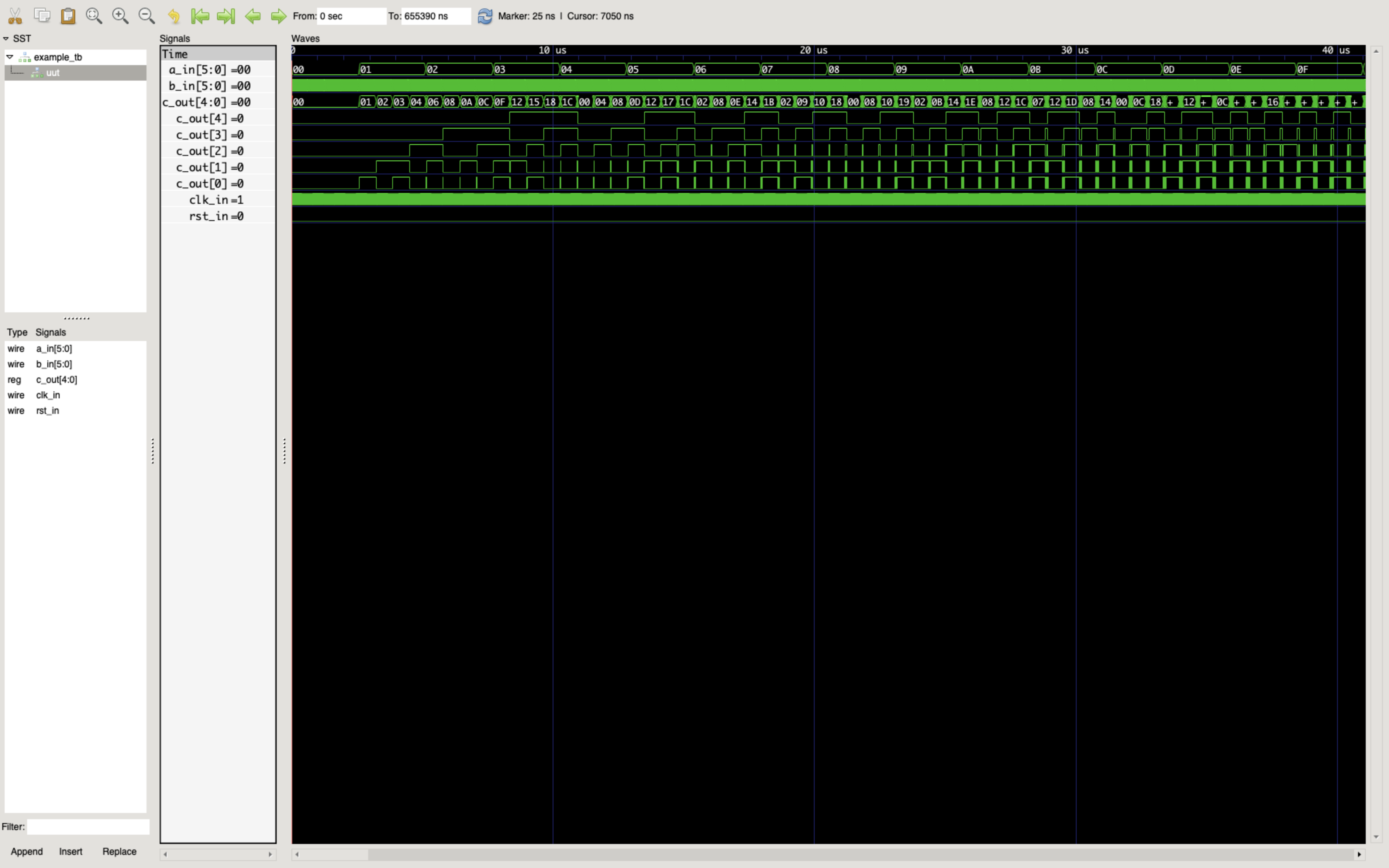Documentation
Setting Up Infrastructure
Please Log In for full access to the web site.
Note that this link will take you to an external site (https://shimmer.mit.edu) to authenticate, and then you will be redirected back to this page.
Waveform Viewers
When running simulations on your computer, you'll generate waveform files which let you view the values of every signal over time; they're an invaluable tool for quickly debugging and maintaining yoursanity! You'll need to install some software to be able to look at the files. For that, you have a few options:
- GTKWave: This is an oldy, but goody. This was out in some form even when I was in undergrad in the mid 2000's.
Detailed install instructions can be found here, and shouldn't need any significant changes, but we've found:
- If you're on Windows and you already installed GTKWave at the same time you installed iVerilog, therenn's no need to install it again.
- macOS people will probably have the easiest time installing from homebrew with
brew install --cask gtkwave. You might need to go theGeneraltab under yourSecurity and Privacysettings and manually allow GTKWave to run.- For some reason GTKWave doesn't like being called from the command line. Assuming it actually installed, you can probably get away with launching it from your Launchpad, and then opening
.vcdfile from there.
- For some reason GTKWave doesn't like being called from the command line. Assuming it actually installed, you can probably get away with launching it from your Launchpad, and then opening
Mac folks, you will likely need to also do:
brew uninstall gtkwave
brew untap randomplum/gtkwave
brew install --HEAD randomplum/gtkwave/gtkwave
- Debian/Ubuntu folks, if you did everything for iVerilog already, you likely can just
apt installgtkwave.
- Surfer: This is a new tool under development for viewing waveforms! It just feels so much more modern than GTKWave. There's a web version, which does great with small waveform files. The web version of this is not as performant, though.1 It would be to your benefit to install it locally; many platforms have prebuilt binaries to make it easy, but you may also need to build it from source; click around on the website for the installation process that'll work for you.
Try out either, or both! Try downloading this TODO: sample file and opening it in one of them, to ensure that you can view a waveform! When you start running your testbenches in cocotb, you'll start generating waveform files that can serve you well.
